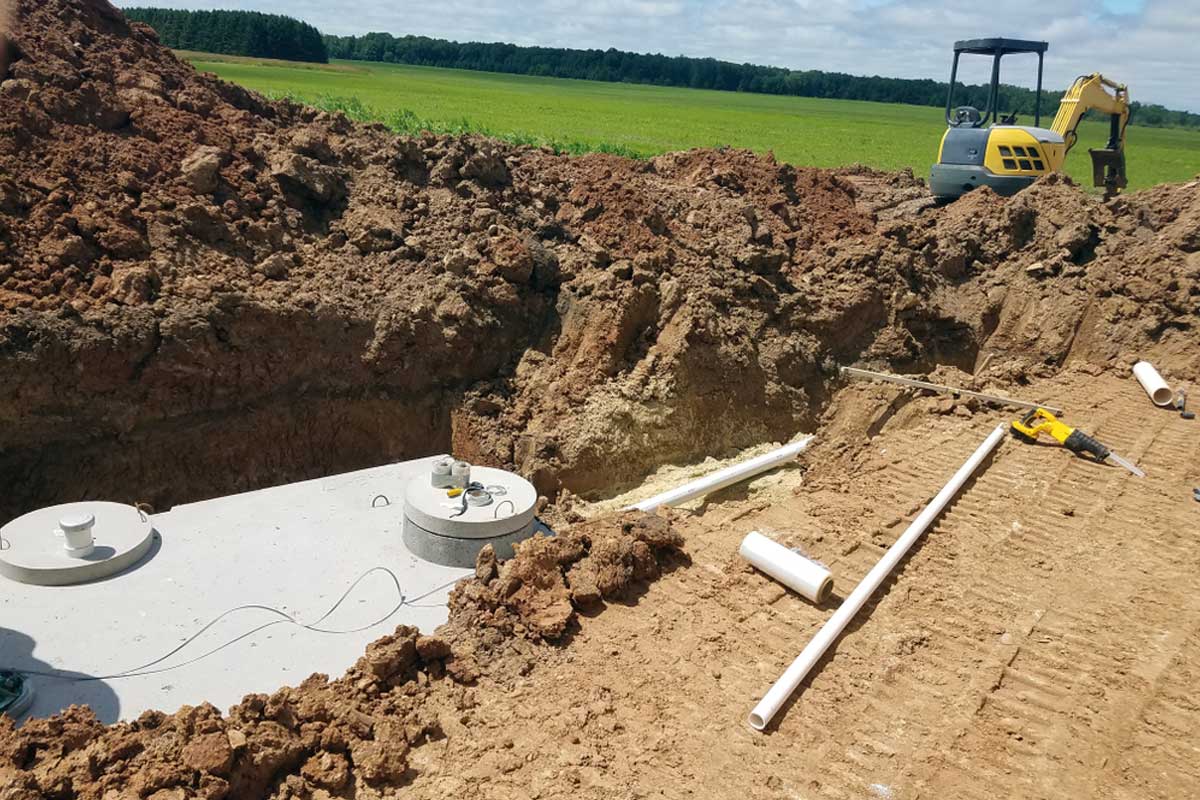When it comes to home ownership Certain aspects are likely to be kept out of sight until they demand attention. The septic tank is one such important but often ignored element of a home. We tend to overlook it, assuming it will dutifully carry out its duties without much maintenance or concern. As with all systems that is used, septic tanks have a life expectancy and will eventually require replacement.
Inexperienced homeowners might be unable to pay for the cost of replacing their septic system. The total amount is determined by several factors, so it’s important to prepare a budget for the replacement system.

Knowing the real cost of replacing tanks involves weighing a variety of aspects that go beyond the obvious cost label. It’s not simply about removing the old tank and installing another one. In fact, many components and services make up the overall expense. Costs are charged at every stage of the process, including obtaining permits, hiring experts, and even excavation and installation.
The cost of replacing the system of septic, which includes installation charges for the leach field and it’s septic system in general, is a major factor. The price for a new tank can vary based on its size, the material and the complexity of the installation. Additionally, the location of your property, local regulations, and soil conditions could also affect the price. Get in touch with experts on septic systems to evaluate your needs and receive an exact estimate. They’ll take into consideration things like the size and design of the leach field. This will ensure a comprehensive understanding of the total expense in your septic system replacement project.
Aside from the tank itself, another substantial expense is the leachfield or drainfield. This component is crucial for the treatment and dispersal of wastewater. It is important to think about the replacement process carefully before replacing a damaged leachfield or one that has failed. This could significantly impact the cost of a septic system replacement. When calculating the overall cost, it is important to take into account elements like the size and composition of leach fields, accessibility, and soil composition.
Homeowners should think about the costs that will be incurred by replacing the septic tank. This can disrupt your daily routine by requiring to temporarily leave your home, or restrict your water usage while the installation is taking place. These inconveniences must be factored into your planning, as they could affect your routine and may result in additional costs, for example, accommodation expenses or changes to your daily schedule.
It is important to realize the need for proper maintenance and care of septic systems are vital to prolong their lives and decrease the chance of replacement that is premature. Neglecting to perform routine maintenance could lead to more serious issues in the near future, like damage to drainfields or tank failure. Planning for maintenance of septic systems is a smart investment that can save you cash over the course of time.
You’ve probably realized that determining the cost to replace the septic system isn’t an easy process. The cost of replacing your septic tank will be determined by a range of variables. These include the size, material and the complexity of installation as well as the state of the leach field. Moreover, the location of your property as well as local regulations could impact the total expense. To determine the exact price, it’s essential to seek out experts who are experienced in the replacement of septic systems.
When you’re considering replacing your Septic system, you might be pleasantly surprised to learn that there are hidden costs that you may not have imagined. These expenses can be incurred quickly, and it’s essential to know about them prior to making a choice. For more information, click septic tank replacement cost
The hidden costs of the replacement of septic systems include:
The costs of inspections and permits. Before you can begin working on the replacement of your septic tank, you will require a permit from your local authorities. The permits are costly and you could also require a fee for inspections.
Cost for excavation and removal. Before the new system can installed, it is necessary to dismantle and remove the existing system. This is a costly and costly undertaking, particularly if it is difficult to access the previous system.
Cost of backfilling and grade. After the old system has been taken out, the hole will need to be backfilled and graded. It is vital that the new drainage system is able to drain properly.
The cost of landscaping is a significant expense. After the new system been put in place, you might need to do some landscape work to ensure it looks tidy and neat. It can be costly particularly if you have to contract a landscaping company.
It is important to consider these hidden costs when budgeting for the replacement of your septic system. Avoid unexpected surprises in the future by planning ahead.
Eco-friendly septic systems are a great alternative for homeowners with a limited budget. These low-cost alternatives are green, as they reduce water pollution and minimize runoff. The eco-friendly options are becoming affordable and easily accessible. They’re a great option for people looking to minimize their environmental impact and not break the bank. While there might be cost-of-investment initial costs when moving to an environmentally friendly system, the extra costs are more than compensated in the form of long-term savings. This isn’t just a trend it’s a change in lifestyle anyone who really want to protect our planet for future generations. If you choose the right system, you can ensure that your home will run efficiently efficient, efficiently, and with minimal maintenance costs.

